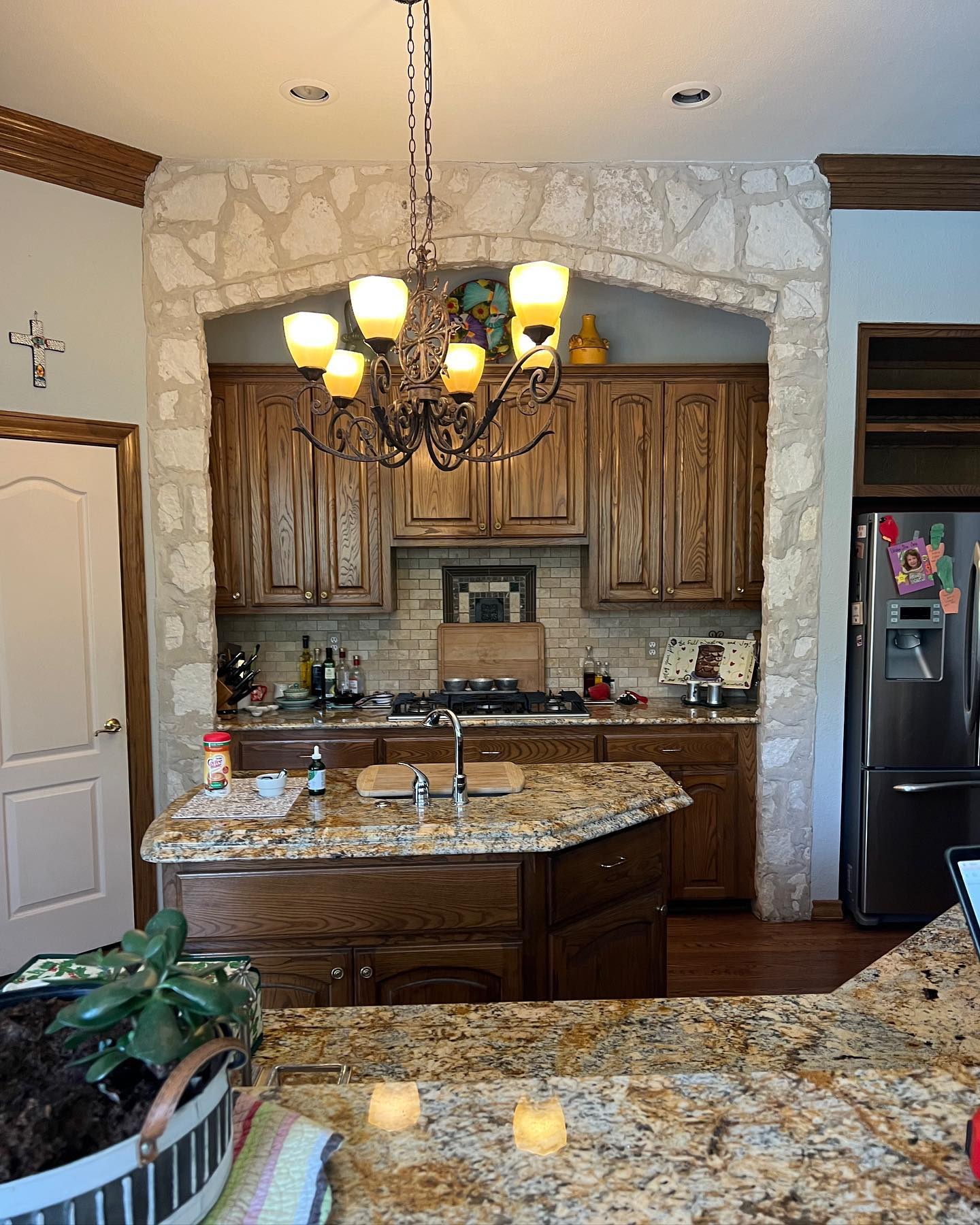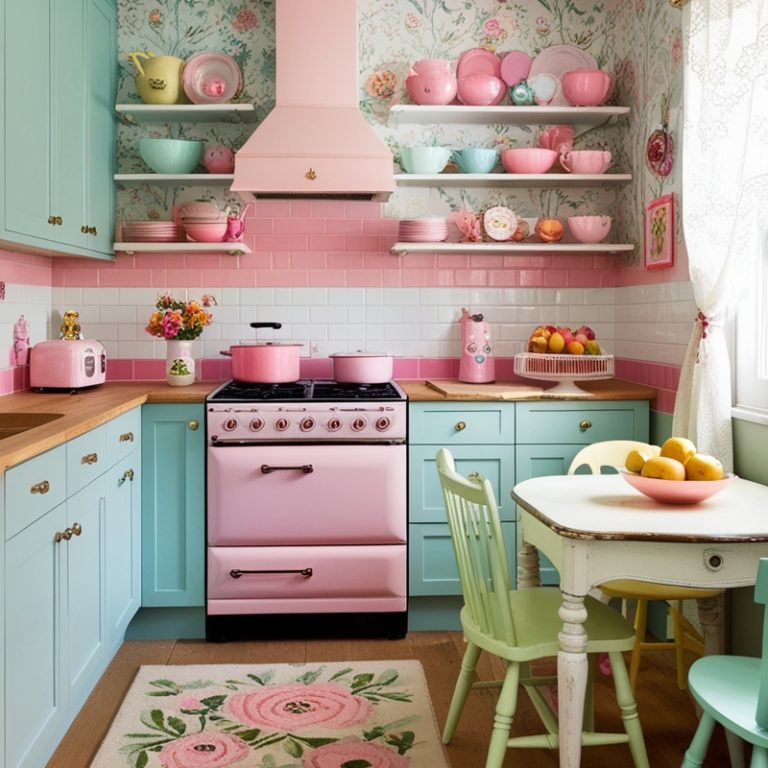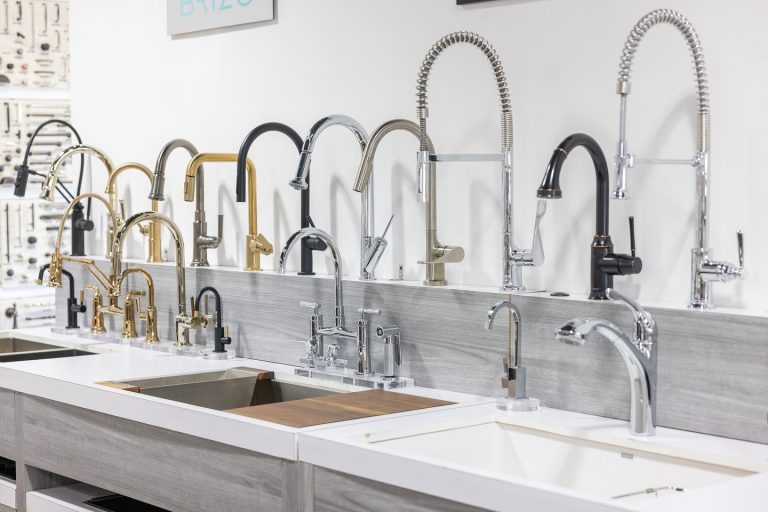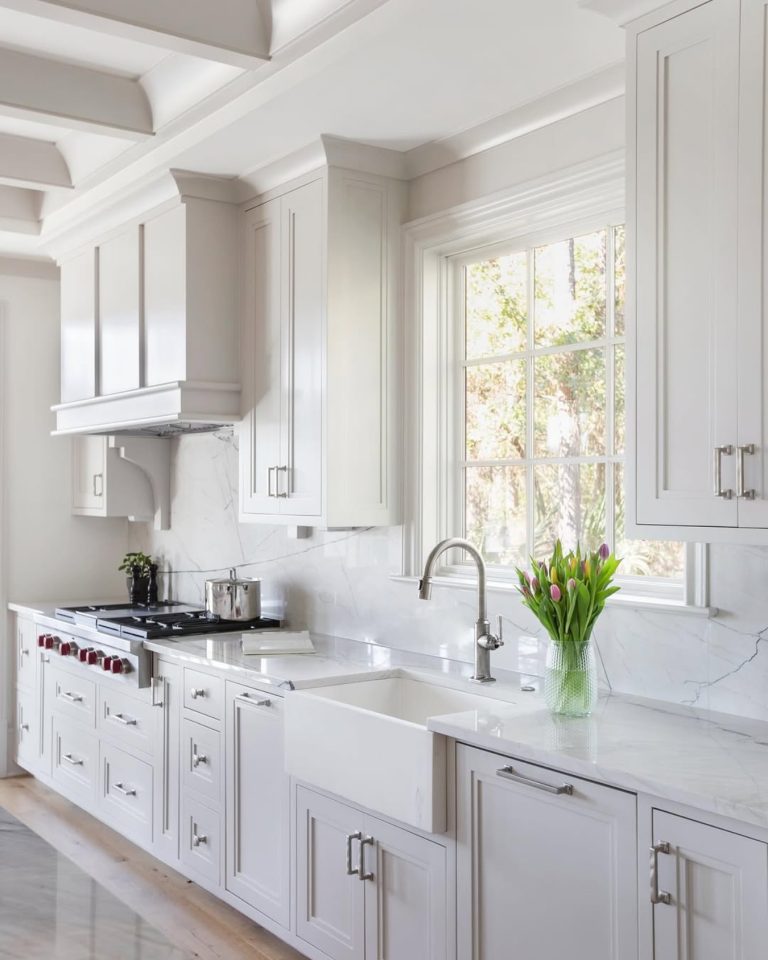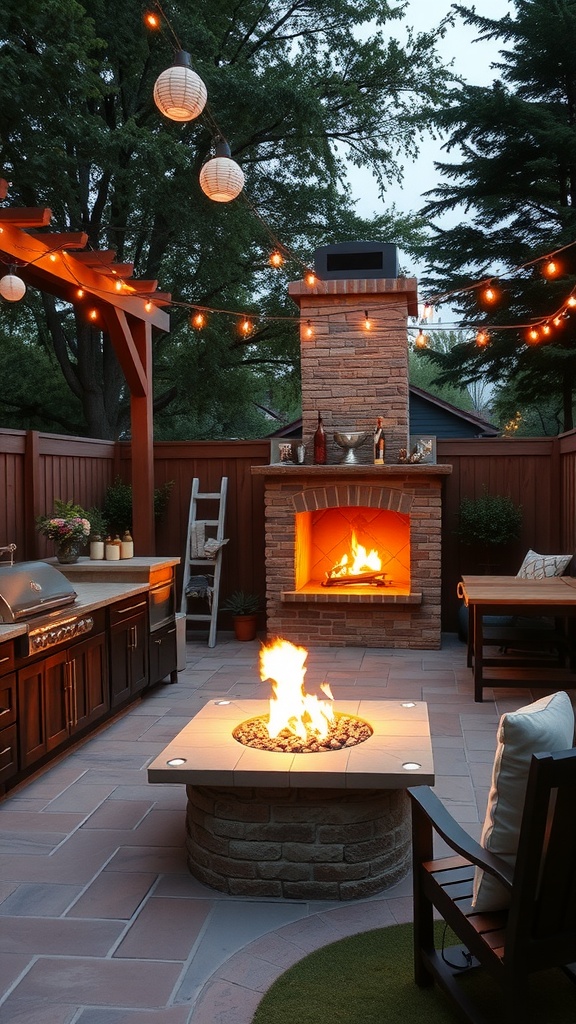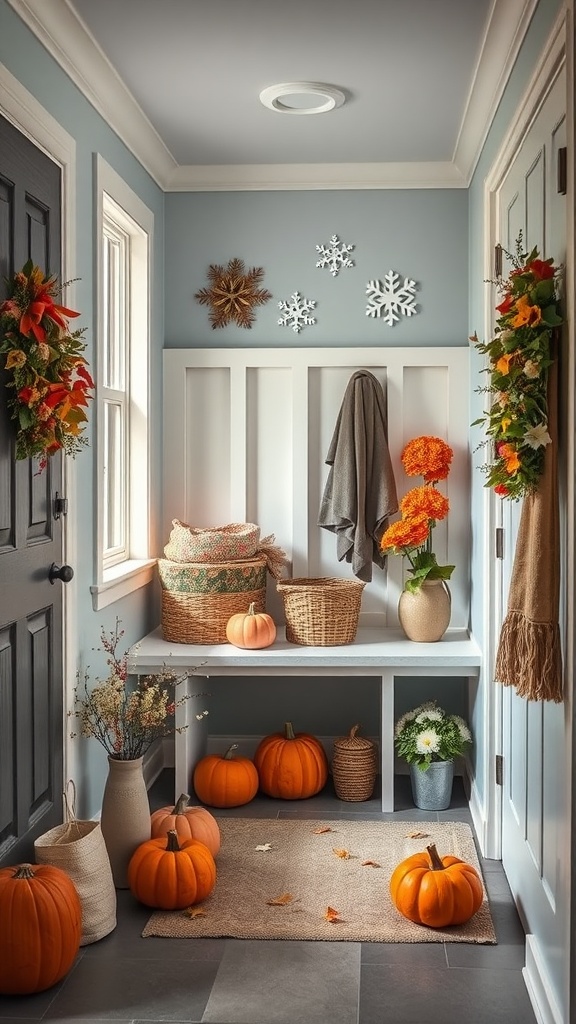21 Tuscan Kitchen Ideas
If you’ve ever dreamed of sipping Chianti while preparing a rustic Italian meal in a sun-drenched kitchen, a Tuscan kitchen might just be your dream come true. With its warm colors, natural textures, and elegant-yet-earthy atmosphere, Tuscan style brings Old World charm into a modern home.
Whether you’re redesigning your kitchen from scratch or looking to add subtle Tuscan flair, these timeless ideas will help you create an inviting space that feels like it’s straight out of the Italian countryside. Let’s explore 21 Tuscan kitchen ideas that beautifully blend rustic luxury with everyday functionality.
1. Warm, Earthy Color Palette
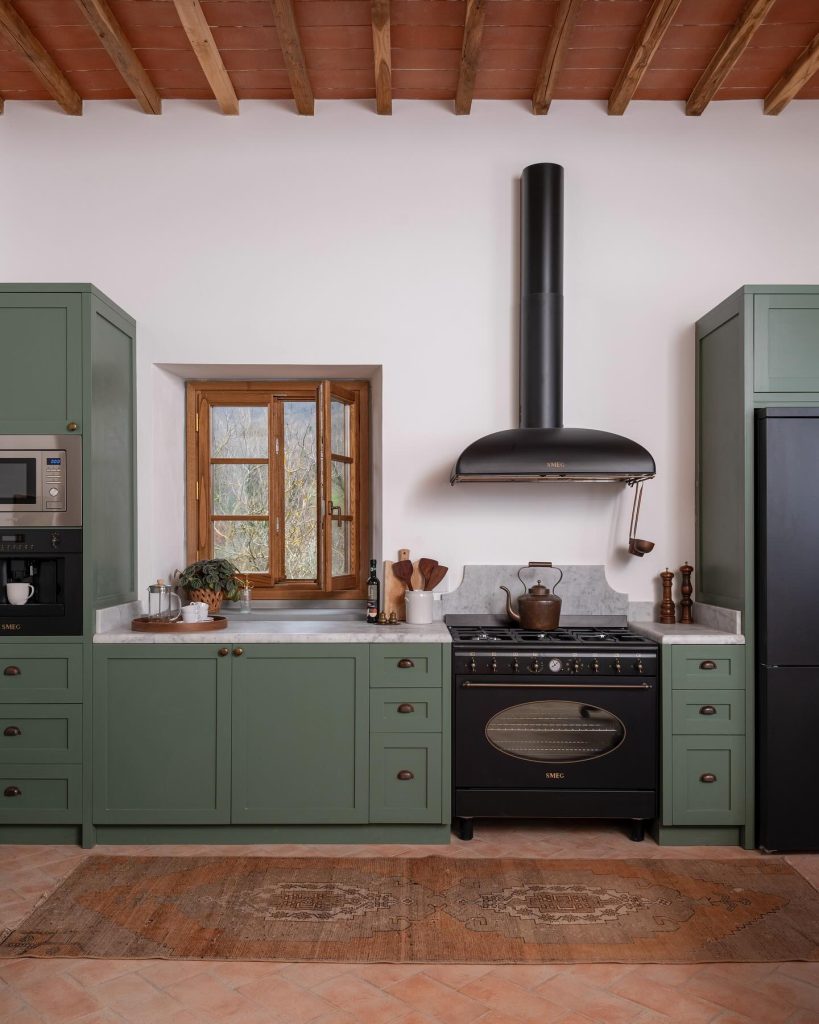
Tuscan kitchens are known for their warm, inviting color schemes that mimic the natural beauty of the Italian countryside. Think sunbaked terracotta, olive greens, golden yellows, and rich browns. These hues reflect the landscape of Tuscany and create a cozy, welcoming space.
To implement this in your own kitchen, start with wall colors in muted earth tones. Creamy beige or soft mustard yellow can act as a perfect base. Add depth with burnt orange or deep red accents in textiles, tile, or accessories.
Layering is key to this look. Mix shades across cabinetry, countertops, and backsplashes for a dynamic, lived-in feel. This approach works especially well in kitchens that receive a lot of natural light, as the warm tones will amplify the sunshine and create a natural glow.
Use decorative ceramic pieces, aged wood finishes, and clay pots to tie in these colors and elevate the aesthetic even further.
2. Rustic Wood Cabinets

One of the defining features of a Tuscan kitchen is the use of rustic, weathered wood. Cabinets made from natural wood—especially cherry, walnut, or oak—create an aged yet luxurious look that adds instant character.
Opt for cabinetry with detailed craftsmanship, such as carved doors or distressed finishes. Hand-rubbed stains or glazes can enhance the wood grain and give the appearance of age and history, even if the cabinets are brand new.
If you’re going for a more modern spin on Tuscan style, consider combining rustic wood lower cabinets with lighter, cream-colored uppers. This mix adds contrast and keeps the space from feeling too heavy.
To round out the look, use antique-style hardware like wrought iron pulls or brass knobs for an authentic Old World finish.
3. Aged Stone Backsplash
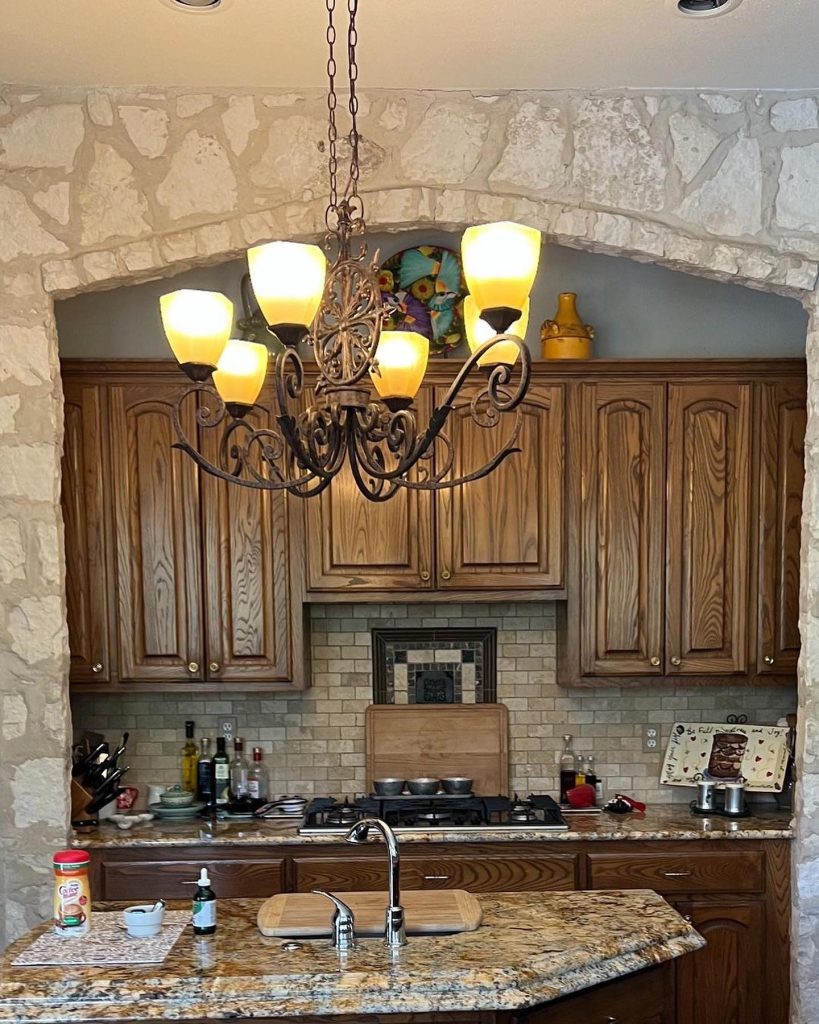
An aged stone backsplash adds both function and Tuscan elegance to your kitchen. Look for travertine, limestone, or tumbled marble tiles that have irregular shapes and rough edges. These natural stones echo the rugged beauty of Tuscan architecture.
Arrange the tiles in a mosaic or classic subway pattern, but avoid anything too sleek or uniform—imperfection is what makes this style feel authentic. Opt for warm tones like beige, taupe, or honey to maintain the cozy, sun-drenched vibe.
A stone backsplash pairs beautifully with rustic wood cabinets and wrought iron lighting, helping to anchor the space visually. For a more dramatic look, choose a patterned tile with Mediterranean flair behind the stove or sink as a focal point.
This combination of function and aesthetic appeal makes the backsplash a key player in achieving a truly Tuscan kitchen.
4. Arched Doorways and Niches
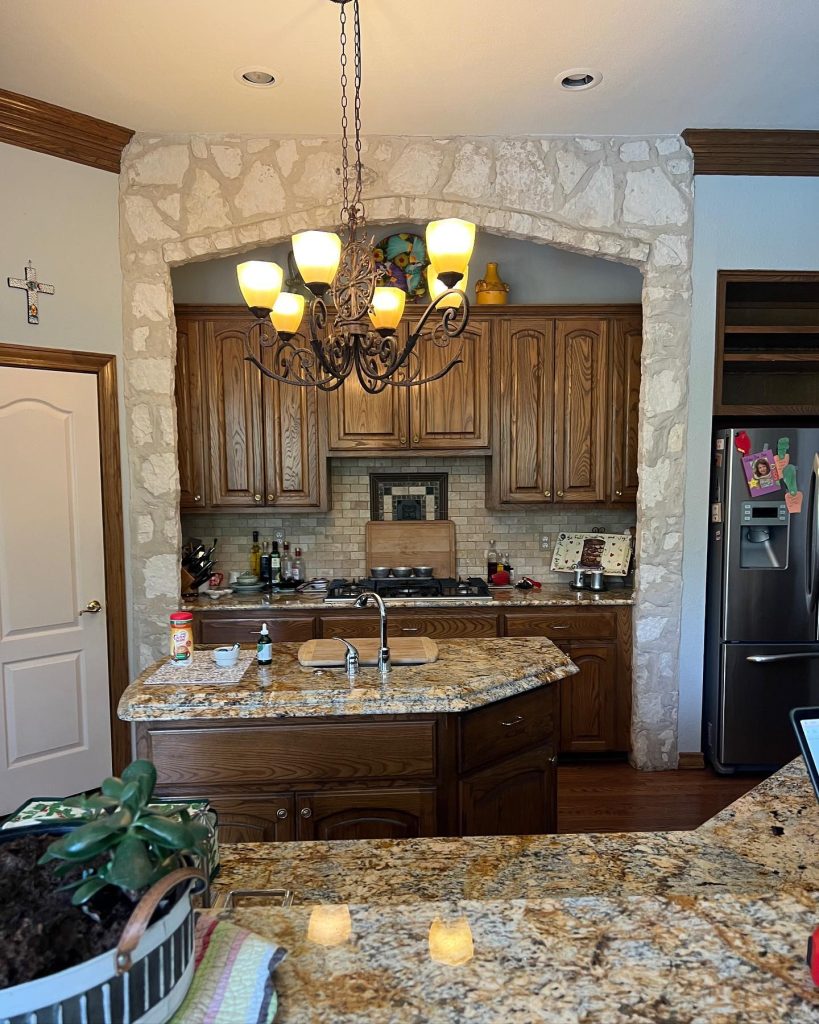
Arches are a hallmark of Mediterranean design and play a major role in the charm of a Tuscan kitchen. They soften hard edges and add an architectural element that feels timeless and romantic.
You can incorporate arches in several ways—arched doorways between rooms, alcoves for cookbooks or pottery, or even arched cabinet fronts with glass inserts.
These curves are especially beautiful when paired with textured plaster or stucco walls, which give the impression of an old Italian villa. If you’re remodeling, consider replacing a squared-off pantry entrance with a graceful arch.
If structural changes aren’t in the cards, you can still add the illusion of arches with curved wall decor, arched open shelving, or rounded hood ranges.
5. Wrought Iron Accents
Source
Wrought iron details instantly elevate your Tuscan kitchen with a touch of European artistry. This material adds texture and contrast to softer surfaces like wood and stone, creating visual interest throughout the space.
Think beyond just light fixtures—although a wrought iron chandelier or pendant lights are a gorgeous start. You can also incorporate ironwork in cabinet hardware, curtain rods, pot racks, barstools, or even decorative wall grilles.
The key is to keep the iron aged and matte, avoiding anything too polished or modern. Black or deep bronze finishes work beautifully in a Tuscan palette.
By weaving in wrought iron, your kitchen will reflect the handcrafted, artisanal spirit that defines this enduring style.
6. Terracotta Tile Floors
Source
Nothing says “Tuscan farmhouse” quite like a terracotta tile floor. These natural clay tiles bring warmth, texture, and a rustic edge to the kitchen that few other materials can match.
Terracotta works especially well in open floor plan kitchens that connect to an outdoor living space, helping to blur the line between inside and out. Its rich reddish-brown tones complement warm wood cabinetry and aged stone beautifully.
You can choose traditional square tiles or go with a herringbone pattern for a more elevated look. Handmade or slightly uneven tiles give the space that authentic, lived-in charm.
If terracotta tiles aren’t practical for your space, consider terracotta-look porcelain for a similar effect with easier maintenance.
7. Exposed Wood Ceiling Beams
Source
Exposed ceiling beams are one of the most iconic features of Tuscan design. They add instant drama and a sense of history, making your kitchen feel like a centuries-old villa.
Use reclaimed wood beams in a natural, unfinished look for maximum authenticity. Darker stains work beautifully against lighter ceiling colors, creating contrast and drawing the eye upward.
Even if your home doesn’t have structural beams, faux wood beams can be added purely for aesthetics. They are lightweight and easy to install, but still provide that rustic elegance.
Pair the beams with wrought iron lighting or hanging copper pots for a cozy, countryside feel that makes you want to linger over a homemade meal.
8. Open Shelving with Italian Pottery
Source
Open shelves are both functional and decorative, making them perfect for showcasing classic Tuscan elements like colorful Italian pottery, olive oil bottles, and copper cookware.
Instead of hiding your best kitchenware behind closed doors, let it become part of the decor. Wooden shelves, especially in a distressed or aged finish, are ideal. Arrange your items in artful clusters with a mix of textures and tones.
Consider including terra cotta vases, vintage glass jars, or ceramic canisters with hand-painted motifs. These add charm while staying practical for daily cooking needs.
This style of shelving brings the kitchen to life and invites you to enjoy every part of the culinary experience—just like in Tuscany.
9. Farmhouse-Style Kitchen Island
Source
A farmhouse kitchen island is a must-have in a Tuscan kitchen. Not only does it provide extra prep space and storage, but it also serves as a focal point for gathering and entertaining.
Opt for an island with a distressed wood base and a natural stone countertop—travertine, granite, or even butcher block can work well. Bonus points for islands with turned legs or open shelving.
If space allows, incorporate a wine rack, drawer dividers for flatware, or hanging hooks for dish towels. These small details reinforce the blend of beauty and function at the heart of Tuscan design.
Top it off with a bowl of fresh lemons or a potted herb garden to infuse color and fragrance into the space.
10. Copper Accents and Cookware
Source
Copper is a beloved material in Tuscan kitchens—not just for its look but for its culinary function. Hanging copper pots and pans from a rack or displaying them on open shelves brings both authenticity and elegance.
Copper’s warm undertones pair perfectly with terracotta floors, rustic wood, and warm stone. It patinas naturally over time, enhancing the Old World feel.
In addition to cookware, look for copper farmhouse sinks, range hoods, or light fixtures. Even small touches like a copper canister set or utensil holder can elevate the space.
The key is to use copper in a way that feels organic and well-loved, not overly polished or trendy.
11. Plaster or Stucco Walls
Source
To truly capture the soul of a Tuscan kitchen, consider finishing your walls with textured plaster or stucco. These treatments give walls a warm, aged appearance and add a layer of depth that paint alone can’t replicate.
Go for soft neutrals like ivory, tan, or clay to keep the focus on the texture. Hand-troweled or brushed finishes work best to create that imperfect, lived-in look.
These walls pair beautifully with wood beams, iron fixtures, and rustic cabinetry, helping unify all the Tuscan elements in the room. They also reflect light in a subtle, diffused way—ideal for kitchens bathed in golden sunlight.
For an extra touch, consider fresco-style wall art or a painted mural with Tuscan landscapes or grapevines.
12. Tuscan-Inspired Range Hood
Source
A statement range hood can become the crown jewel of your Tuscan kitchen. In true Italian farmhouse fashion, a Tuscan-style hood should feel handcrafted and timeless, often featuring a stucco or plaster finish, aged wood trim, or wrought iron detailing.
For an authentic look, go with a wide, arching hood that mirrors the curves seen in Mediterranean architecture. Plaster or stone-finished hoods work particularly well against tiled backsplashes and rustic cabinetry. If you love ornate details, consider adding a carved wood appliqué or molding to give your range hood an antique feel.
Pair it with a tile accent or mosaic behind the cooktop—perhaps something with a grapevine or olive branch motif for that true Tuscan flair.
Beyond aesthetics, make sure your hood provides excellent ventilation for serious cooking. A beautiful hood that works hard? That’s a win-win.
13. Mediterranean Mosaic Tiles
Source
Mosaic tiles in a Tuscan kitchen offer an opportunity to add color, craftsmanship, and personality. These intricate tiles can serve as a standout backsplash, a focal wall, or even as an accent on a kitchen island or range hood.
Choose tiles with earthy colors like terracotta, mustard, olive green, and cobalt blue. Look for traditional Mediterranean patterns such as floral scrolls, geometric shapes, or grapevine motifs.
These tiles don’t just enhance the decor—they tell a story of artisanal heritage. You can go all-in with a full mosaic feature wall, or keep it subtle with a border tile strip or framed accent above the stove.
Balance the boldness of mosaic with more neutral materials elsewhere so the space feels rich but not overwhelming.
14. Reclaimed Materials
Source
One of the most authentic ways to channel the Tuscan countryside is by incorporating reclaimed materials into your kitchen. Think centuries-old beams, weathered bricks, salvaged wood planks, or vintage stone slabs.
Reclaimed wood is especially ideal for flooring, ceiling beams, or a show-stopping farmhouse table. Its irregular grain and imperfections bring texture and history into the room, creating an ambiance that feels rooted in tradition.
Reclaimed bricks can be used to create an exposed wall or to line the sides of a kitchen island. For countertops or backsplashes, consider reclaimed limestone or marble, which age beautifully and reflect Tuscan elegance.
Using these materials isn’t just about style—it’s also a sustainable design choice that pays homage to Old World resourcefulness.
15. Ornate Lighting Fixtures
Source
Lighting is crucial in Tuscan kitchens—not just for function, but for setting the mood. Skip sterile, modern fixtures in favor of ornate designs with character. Wrought iron chandeliers, lantern-style pendants, and amber glass sconces all fit perfectly within the Tuscan aesthetic.
Look for fixtures that feature scrollwork, candle-style bulbs, or hammered metal finishes. These touches lend a romantic, historical ambiance that echoes the villas of Tuscany.
Hang a grand chandelier above your kitchen island or breakfast nook to make a bold statement. For task lighting, use smaller pendants in antique finishes or wall-mounted lights with decorative arms.
Layer your lighting with under-cabinet LEDs for practicality while letting your main fixtures take center stage in design.
16. Large Farmhouse Sink
Source
A deep, wide farmhouse sink is a must-have in a Tuscan kitchen. These sinks are both beautiful and highly functional, perfect for washing produce, large pots, or even hand-washed linens.
Opt for natural materials like fireclay, copper, or even stone to keep with the rustic theme. An apron-front sink adds an old-world charm and pairs beautifully with distressed wood cabinetry or vintage-inspired hardware.
Pair your sink with a high-arc, oil-rubbed bronze or antique brass faucet to complete the look. Many Tuscan kitchens also include a secondary prep sink in the island, often with a matching vintage-style fixture.
Beyond their classic beauty, farmhouse sinks make everyday chores feel like a more luxurious, grounded experience.
17. Decorative Ceiling Details
Source
Beyond exposed beams, Tuscan kitchens often feature decorative ceilings that serve as the literal high point of the design. Coffered ceilings, wood-paneled planks, or even painted motifs can all bring depth and elegance overhead.
If you’re feeling adventurous, consider adding a faux fresco—a hand-painted ceiling mural featuring clouds, vines, or a pastoral scene. These ceiling treatments echo the architecture of historical villas and palazzos.
Coffered ceilings with wood inlays or plaster molding add dimension and a sense of craftsmanship. Wood tongue-and-groove boards painted in creamy hues can also warm up the space subtly.
Tie your ceiling into the rest of the kitchen by coordinating stain or paint colors with cabinetry or flooring for a seamless and cohesive look.
18. Built-In Wine Storage
Source
Wine is central to the Tuscan lifestyle, and it deserves a place of honor in your kitchen design. Whether you’re a serious collector or just love a casual glass with dinner, built-in wine storage can blend beauty with practicality.
A wall-mounted wine rack, under-counter wine fridge, or even a full wine cabinet with arched wood shelving can add visual appeal while keeping bottles close at hand.
Rustic wood or wrought iron wine racks feel especially authentic, while recessed niches or arched openings can give the appearance of an old wine cellar.
Display a few vintage labels alongside olive oil jugs or ceramic carafes to create a miniature Tuscan vignette right in your kitchen.
19. Tuscan Wall Art and Decor
Source
Finishing touches matter, and the right wall decor can bring your Tuscan kitchen to life. Think framed paintings of vineyard scenes, antique cutting boards, wrought iron scrolls, or ceramic plates with hand-painted details.
You might also hang a vintage clock, a bunch of dried herbs, or even a woven basket or two. These details help tie the room together and give it the warmth of a lived-in space passed down through generations.
Don’t overcrowd the walls—choose a few meaningful pieces that reflect your personality and love of the Tuscan aesthetic.
Combine these with functional items like hanging ladles or colanders to blend beauty with utility.
20. Herb Garden Windowsill
Source
A small windowsill herb garden brings Tuscany’s natural abundance into your home in the most delightful way. It’s a simple yet meaningful addition that engages the senses—sight, smell, and taste.
Choose herbs commonly used in Italian cooking like basil, rosemary, oregano, and thyme. Plant them in terracotta pots or ceramic planters for a rustic touch.
Place your garden near a sunlit window above the sink or near the cooking area for easy access while prepping meals. Add a small wrought iron rack to hold your pots if counter space is limited.
Not only does it enhance the aesthetic of your kitchen, but it also invites you to cook more seasonally and naturally—very much in line with Tuscan living.
21. Cozy Breakfast Nook with Tuscan Flair
Source
Tuscany is about gathering, lingering, and enjoying the moment—and what better place to do that than a cozy breakfast nook? Create a charming corner in your kitchen with a rustic wood table, cushioned seating, and layers of textile.
Use earth-toned cushions or upholstered bench seating in linen or cotton, paired with a solid wood table that looks like it’s been loved for decades. Add a wrought iron chandelier above and maybe a few baskets or framed vineyard prints on the wall.
If your nook is near a window, dress it with soft, sheer curtains that let in the morning light.
This space should feel intimate, inviting, and effortlessly elegant—the perfect spot for your morning espresso or a glass of wine at sunset.
Conclusion: Bring the Heart of Tuscany Into Your Home
Tuscan kitchen design is more than just a look—it’s a feeling. It’s about embracing warmth, craftsmanship, and the simple joys of everyday living. Whether you go all out with stone archways and hand-painted tiles, or simply bring in a few rustic touches and copper accents, each element helps transport you to the rolling hills of Italy.
The key is layering—textures, materials, colors, and charm. From wrought iron details to terracotta floors, every design choice tells a story. It’s a story of tradition, family, and time-honored beauty that never goes out of style.
So if you’re dreaming of a kitchen where meals are cooked slowly, wine is poured freely, and the space feels like a welcoming embrace, a Tuscan-inspired kitchen is the perfect answer.
Ready to bring a touch of Tuscany into your home? Start small or go big—either way, your kitchen is about to become the heart of your home in the most beautiful, timeless way.

